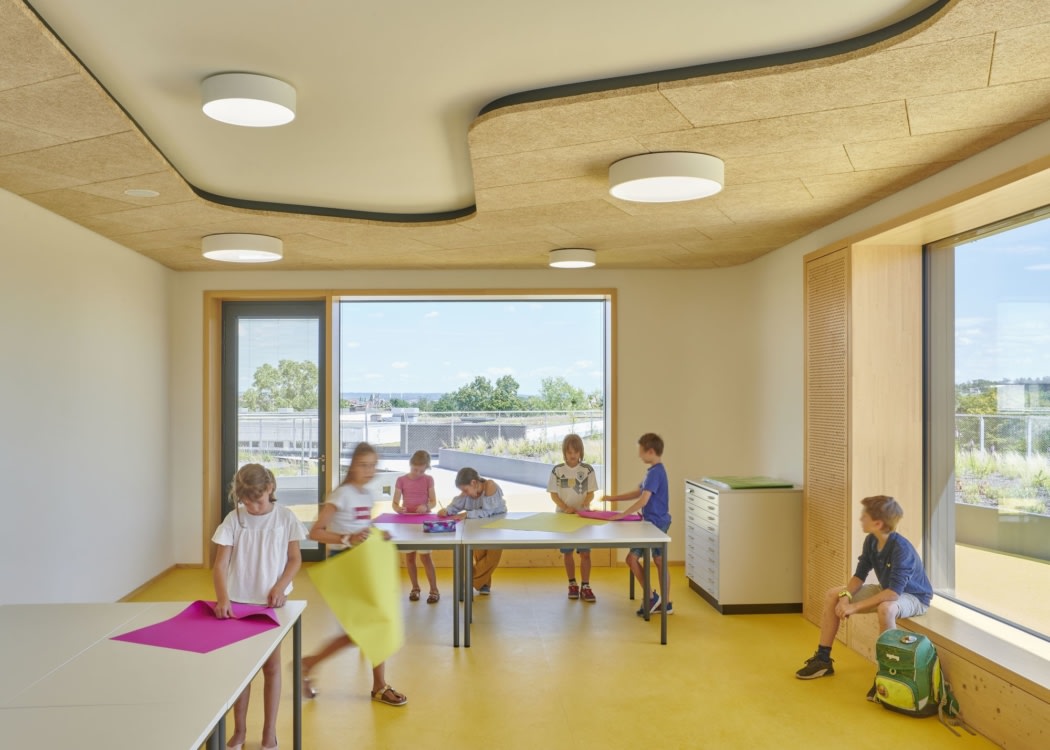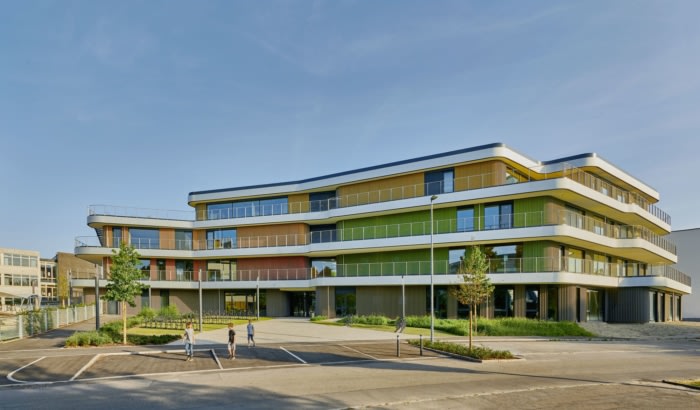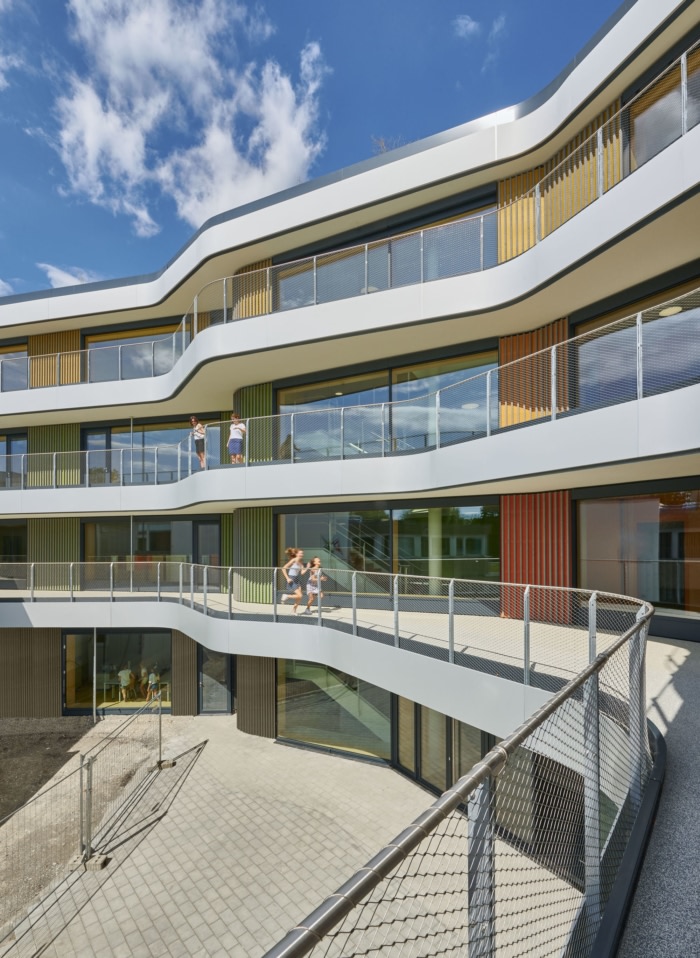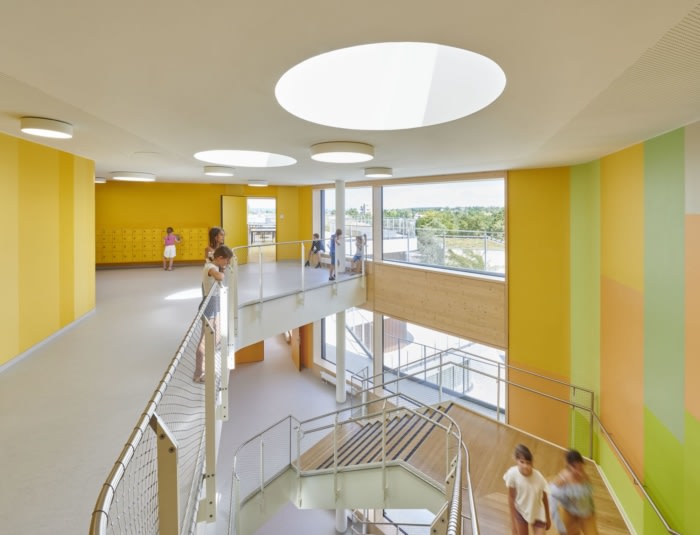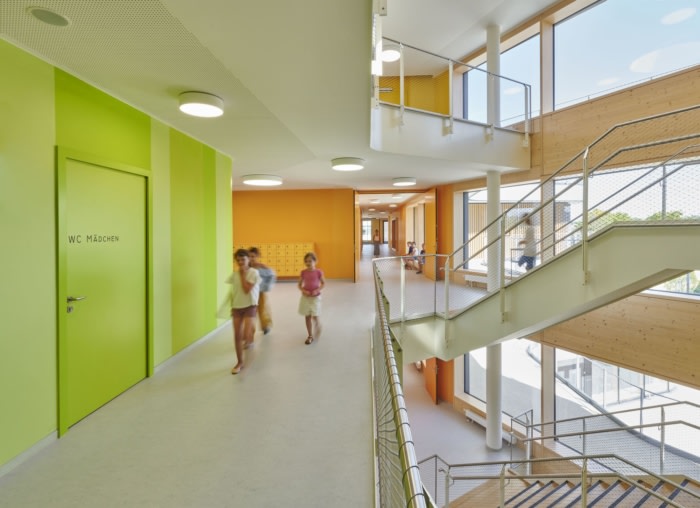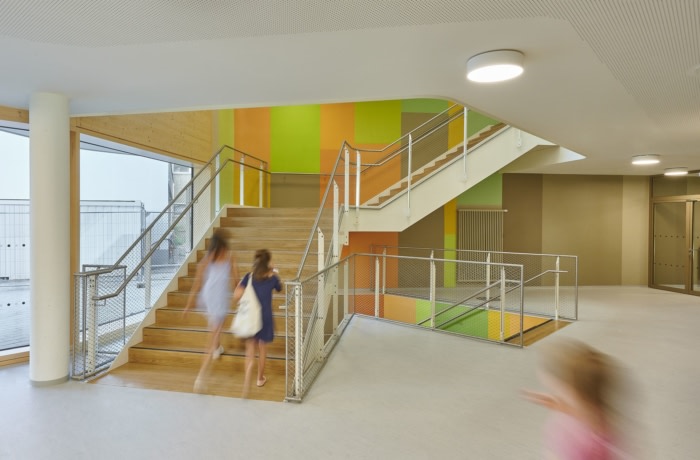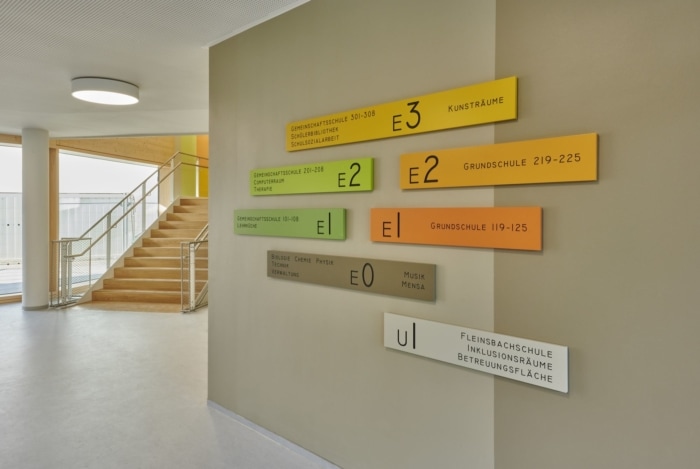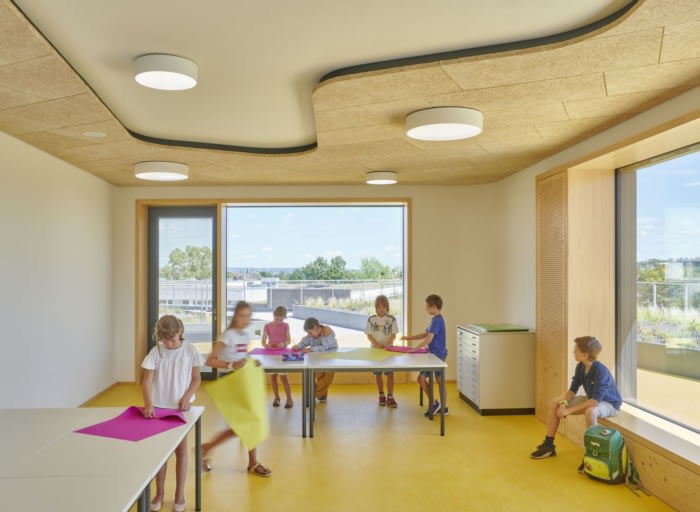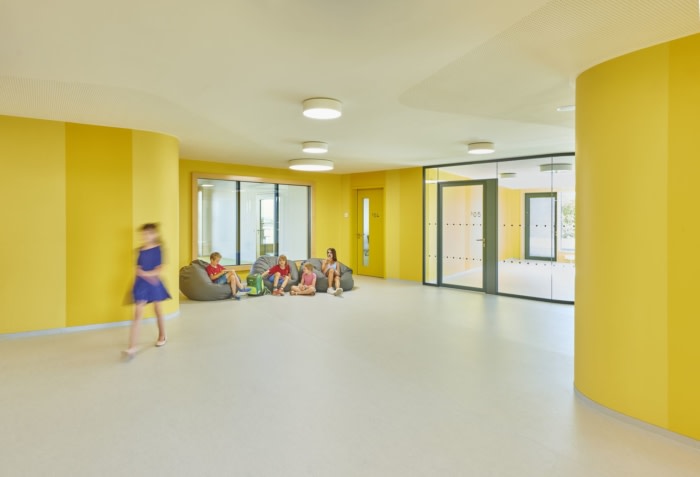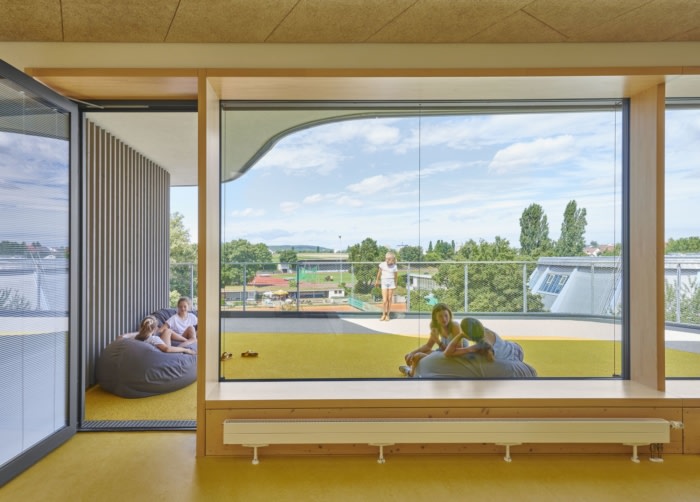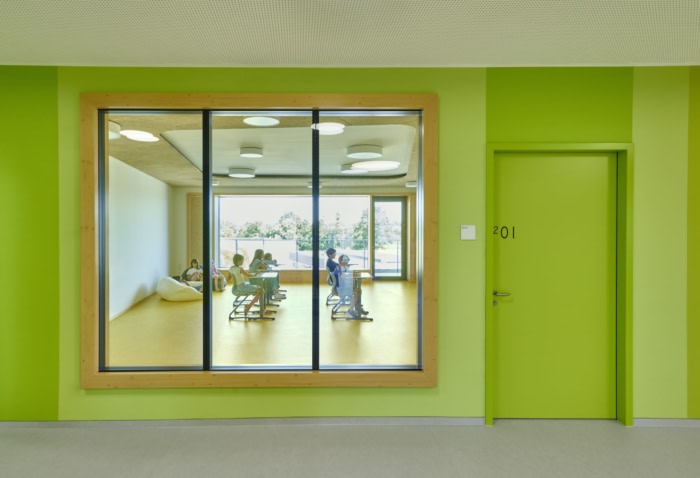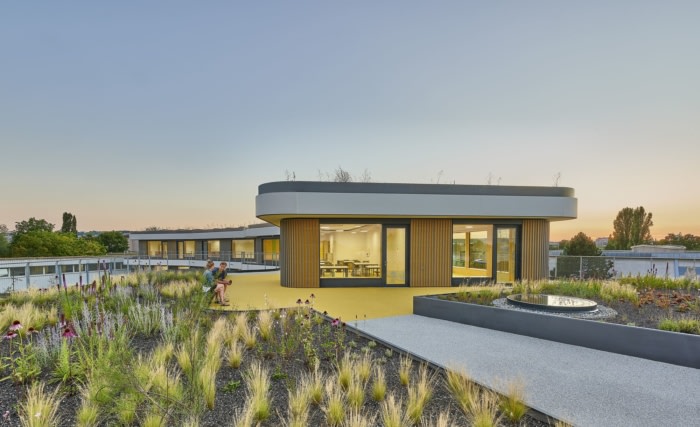Gotthard-Müller School
Behnisch Architekten designed an architectural upgrade for the Gotthard-Müller School to meet the demands of modern learning in Bernhausen, Germany.
Behnisch Architekten has created a whole new school campus in Filderstadt, south of Stuttgart. The plan was for the existing site, comprising the Gotthard-Müller School, an affiliated sports hall, and the neighboring Fleinsbach School, to receive an architectural upgrade and be adapted to the demands of the new pedagogical concept, which features a form of “all-day school care.” The task was to create a new building for the Gotthard-Müller elementary (Grundschule) and community school (Gemeinschaftsschule) that would accommodate two parallel classes in each grade, as well as an extension area catering to the Fleinsbach junior high school (Realschule) and a cafeteria for general student use—all integrated into a single school campus. The new school building with its free-flowing, organic design is confidently positioned at the heart of a heterogeneous setting. The horizontal lines and terracing running around each story give the structure a distinct individual character. The architectural concept envisioned the core idea of a vibrant school campus that encourages teachers and students to work together.
Two kinds of school under one roof
The building centers on the foyer, which acts as a meeting point and provides access to the cafeteria, the student library, classrooms for specific subjects, and rooms for teachers and school social workers. Twin entrance areas create a feeling of permeability, ensuring a clear connection to the space outside. Different school yards with planted areas, outdoor spaces that merge into one another, and the Agora—a sunken courtyard with steps that just invite you to take a seat—are designed as landscape features that will promote community and enhance the relationship between the two schools. The garden level opens up onto the Agora with a generous expanse of glazed areas. Inside the building the open atrium is suffused with light and unifies the structure vertically. The elementary school is located on two stories in the northwest wing. In the southeast section, the community school occupies three stories for grades five through ten.“Learning houses”
The available space is organized into a variety of learning landscapes and open room structures that are designed to encourage communication, based on pedagogical theories about learning in an individualized, cooperative, and social manner. Classrooms, group rooms, and multipurpose rooms are combined in units, known as “learning houses.” Teachers can also maximize the sense of openness and transparency by holding classes in the adjoining access zones and in outside areas, which makes the entire building a livelier place. The extensive use of transparent glass elements allows people outside the classroom to see what is going on inside, while wraparound terraces provide direct outdoor access. The distinctive color schemes on the walls give the individual learning houses an unmistakable character that helps generate a specific sense of identity. Intense orange, yellow, green, and earthy hues create a vibrant and stimulating mood. Haptic, warm, and high-value materials such as linoleum, wood-based products, and acoustic ceiling materials are used in the design of the classrooms and convey a feeling of well-being.A facade with multiple functions
The facade is more than the thermal barrier between the inside and outside of the building. The architects have instead interpreted it as furniture which can be utilized—for instance, as window seating—and as an element that houses all the technical fixtures, rendering them virtually invisible. The external facade features both closed and transparent floor-to-ceiling sections. Perforated colored metal panels act as cladding and trace the curved form of the structure. These permeable panels enable a constant exchange of air between the interior and exterior, providing a basis for mechanical ventilation. Additional vertical timber cladding creates a dynamic play of colors that is dependent on the angle of view and is best appreciated when walking along the facade.
Design: Behnisch Architekten
Photography: David Matthiessen

